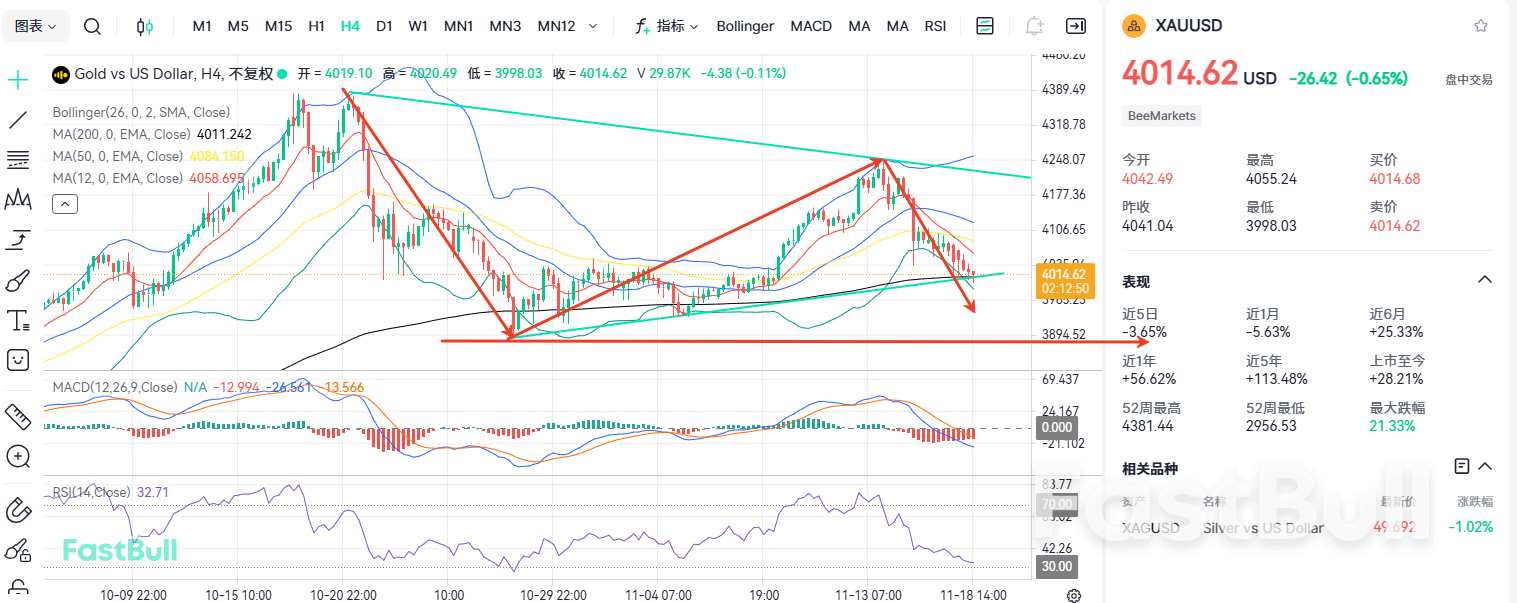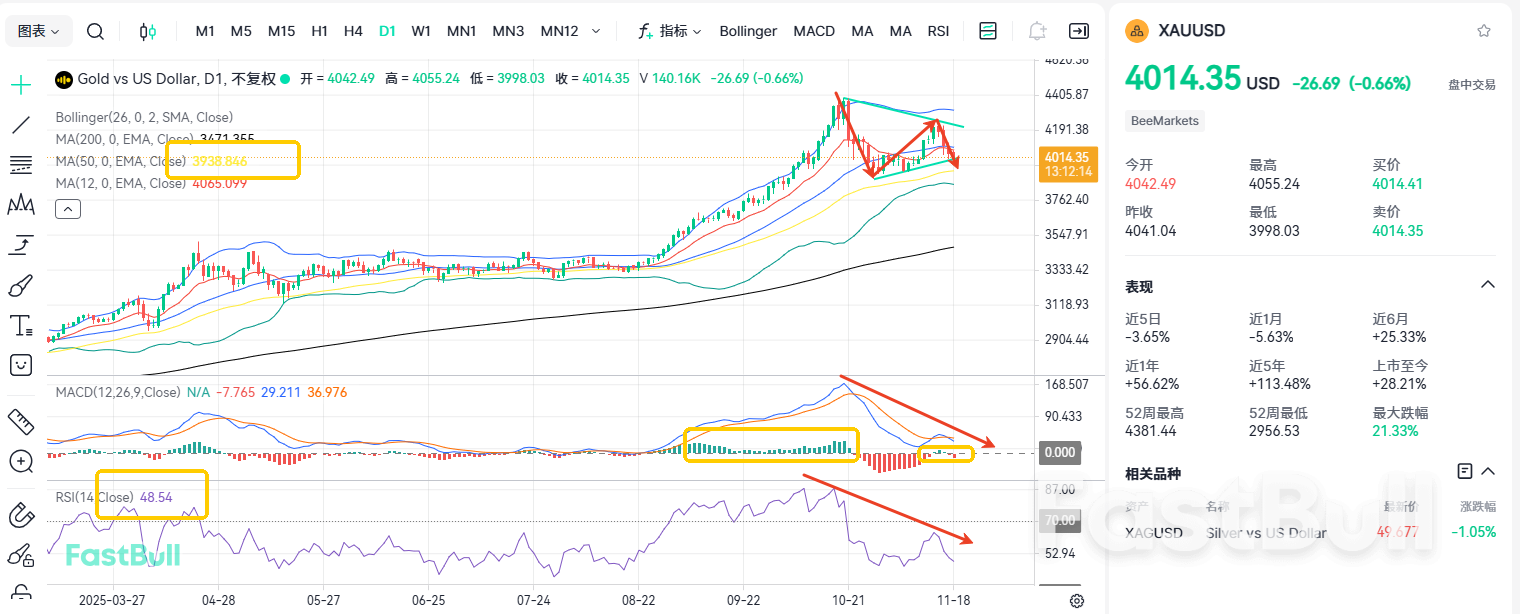Fundamentals
Robust U.S. macro data propelled the New York Fed's November Empire State Manufacturing Survey to 18.7, far above the consensus 6.1 and October's 10.7, recording the highest print in a year. The new-orders sub-index leapt from 3.9 to 15.9, signalling a pronounced rebound in regional factory activity. Concurrently, U.S. construction spending rose 0.2% MoM in August——the fastest pace since August 2024. Taken together, the releases underscore the economy's resilience, prompting markets to re-price the Fed's policy path and markedly pare December rate-cut bets.
The repricing lent support to the DXY, while gold—an asset that yields no carry—saw its relative allure diminish, becoming the principal headwind to higher bullion prices. Separately, Indonesia announced plans to impose a gold-export levy of 7.5%–15% starting in 2026, aimed at catalysing domestic mineral-processing downstream capacity.
This policy is not an isolated incident; it is an integral part of the reshaping of supply-and-demand dynamics in Asia's gold market. Vietnam has recently intensified its crackdown on gold-import smuggling. India is about to enter the traditional wedding season, which will boost physical offtake. The People's Bank of China has increased its gold reserves for eighteen consecutive months. These disparate yet persistent signals reveal that the underlying supply-and-demand logic for gold across Asia is undergoing a profound transformation. Although the international gold price has been oscillating at historical highs for two months and the market is increasingly eager for a directional breakout, the structural shifts in Asia could trigger a chain reaction far larger than currently anticipated.
Precious metals prices edged lower as traders scaled back expectations for a U.S. rate cut next month. Market participants are closely monitoring the upcoming U.S. September non-farm payrolls data, scheduled for release later on Thursday. The dollar strengthened for a third consecutive day, increasing the cost of gold purchases for holders of other currencies. Following the longest government shutdown in U.S. history, traders remain focused on the Fed's monetary policy trajectory, with the shutdown having caused delays in official economic data releases.
In addition, hawkish remarks from Fed officials have exacerbated the decline in gold prices. Several Fed policymakers, including Atlanta Fed President Raphael Bostic and Kansas City Fed President Jeffrey Schmid, have voiced concerns over inflation or signaled support for keeping rates on hold.
According to the CME Group's FedWatch tool, traders now assign a 45% probability to a 25 bp cut at the December meeting, down from over 60% last week. UBS analysts argue that the "full data set" to be released before the December FOMC will be insufficient to arrest the market's growing conviction that a third rate reduction this year is warranted.
Technical Analysis
Bollinger Bands on the 4-hour chart are diverging downward. Price sliced through the psychological 4,000 handle and simultaneously broke the lower boundary of the triangle consolidation, confirming violent selling pressure. A decisive loss of 4,000 would open the door for a swift move toward the prior swing-low at 3,886. MACD has printed a bearish crossover and both lines remain submerged below the zero axis, while RSI sits at 32—both indicators flagging intense bearish momentum. The succession of lower highs shows the downtrend is intact.
On the daily chart, the MACD histogram is shrinking even as price fails to register a higher high, generating a textbook bearish divergence. The probability of a continued short-term decline is therefore elevated. Downside targets are the lower Bollinger Band at 3,860 and the EMA50 around 3,938. RSI at 48 leaves price in neutral territory, but the pattern of descending peaks reinforces the bearish bias.
Therefore, traders are recommended to favor selling into rallies with a focus on high-probability short setups.
Trade Recommendations
Trade Direction: Sell
Entry Price: 4000
Target Price: 3600
Stop Loss: 4390
Support: 3900/3800/3600
Resistance Levels: 4380/4500/5000














